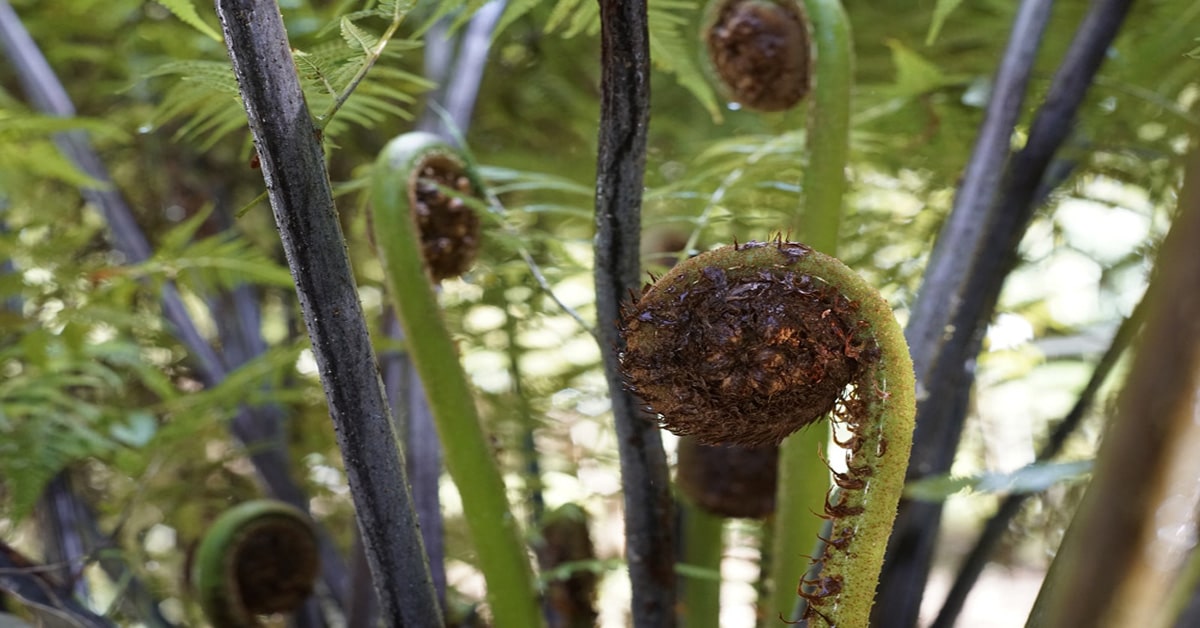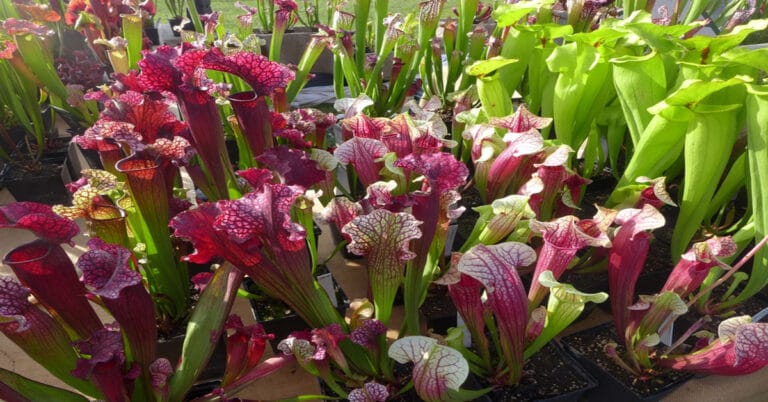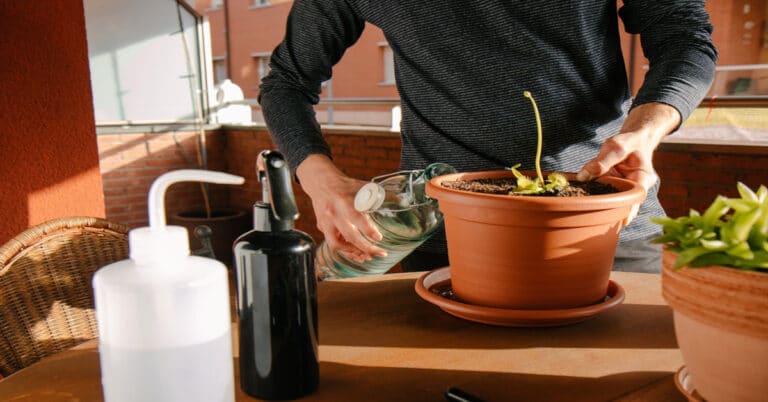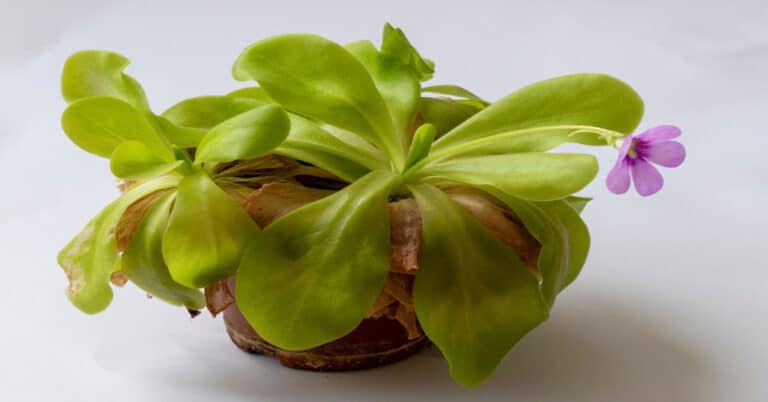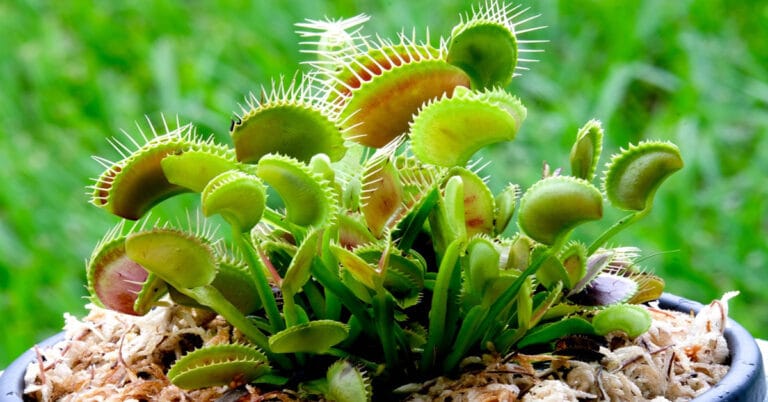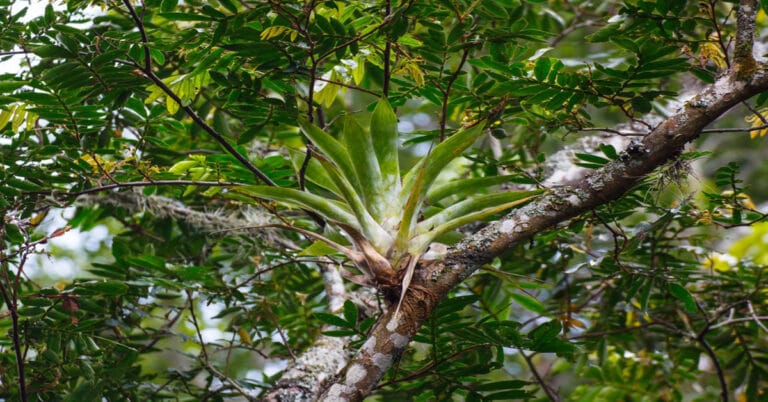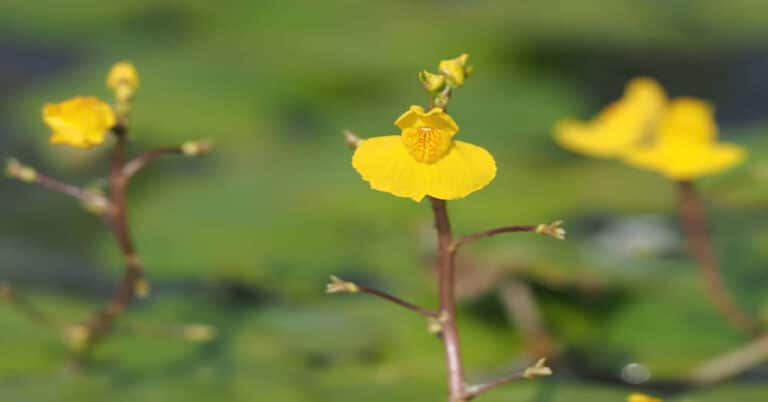Drosophyllum Lusitanicum
Drosophyllum is a type of carnivorous plant having a single genre, Drosophyllum lusitanicum (Portuguese sundew or dewy pine). It looks akin to the related group Drosera (the sundews) and to the more distant cousin Byblis (the rainbow plants).
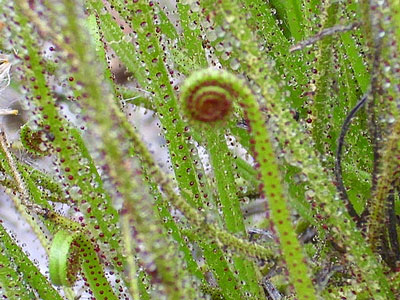
| Kingdom | Plantae (Plants) |
| (Unranked): | Angiosperms |
| (Unranked): | Eudicots |
| (Unranked): | Core Eudicots |
| Order | Caryophyllales |
| Family | Drosophyllaceae Chrtek, Slavikova & Studnicka |
| Genus | Cephalotus Labill. |
| Species | Drosophyllum |
Natural Habitat
The species Drosophyllum lusitanicum inhabits the western Mediterranean region, mainly Morocco, Portugal, and Spain. This is among the few carnivorous plants that grow in dry, alkaline soils. Its glandular leaves of size 20 to 40 cm (8- to 16-in) uncoil from an inner rosette. Quite like most sundews, these are unable to move but have the unusual trait of coiling out when not fully formed (outward circinate vernation.)
How the Traps Work
- It catches prey with the help of pitfall traps. Three different sections complete the entire process; the attraction section, a slip section and the digestive section. Its trap is akin to pitcher plants in other species.
- The perimeter at the opening of the trap has an inward facing spiked arrangement that enables the prey to come in, but obstructs its get away.
- The lid above the entrance stops rainwater ingress into the pitcher, thus preventing thinning of the digestive juices. The partially transparent lid confuses its prey by looking like sky patches.
- The closing mechanism is different from other carnivorous plants, but escape is nearly impossible after the prey goes into the pitfall trap. A collar contracts the opening of the trap. As a result, the victim is unable to go up and escape, having once fallen into it.
The Drosophyllum lusitanicum has a discrete sweet aroma that attracts the insects that form its food. On landing on its leaves, the insects stick to the mucilage oozed by the stalked glands on the leaves. As the insects increasingly try to wriggle out, escape becomes difficult until they die due to exhaustion or suffocation. Then, the plant produces enzymes that liquefy the insects and discharge the nutrients that the plants absorb. The nutrients complement the nutrient-lacking soil in which this plant grows.
Germination
In its local habitat, flowering takes place from February to May, though at times a delay can occur. The bright yellow, usual, quinate flowers could have a diameter of up to 4 cm and appear in groups of 3 – 15. It is rare to see a flower growing independently. It takes about a month for the seed to mature in its cone-shaped lucent seedpod, exposing opaque black, ridged pear-shaped seeds, having a diameter of about 2.5 mm. One seedpod may hold 3-10 seeds. Slowly, the wind shakes out seed for several months. Seeds germinate with the onset of first autumn rains. Seedlings grow rapidly and in their local environment, flower in the second year. The seeds that you store for many years show a high rate of germination.
Tips for Domestic Cultivation
Container selection
Use tall pots of terracotta or glazed ceramic pots for planting the Drosophyllum that measure 8” across and 12 “ high, and additionally choose a beautiful pot that can house the plant for life. Close attention and proper care are the basic essentials for a long and healthy plant life.
Substrate
You must remember to make sure to provide a proper substrate, preferably containing a mix of equal portions of 1/8 peat and vermiculite with 1/4 perlite and 1/2 portion silica sand. Take special care about good drainage as these plants do not grow in acidic wet soils, and instead grows in dry alkaline soils in their natural habitat.
- Seed Germination in Captivity
- Their seeds are hard and you will have first to rub the seeds between two fine sheets of sandpaper slightly to remove the coating, after which, soak them in distilled water for 24 hours.
- Sowing these seeds in a shallow germinating tray with vermiculite, and storing in a warm, wed and bright place will produce good results. In this process, make sure that you neither cover the seeds nor bury them deep, and you will find them germinating within a few weeks.
- Immediately after germination, shift the sprouting seeds to a 5 cm diameter compostable pot filled with Drosophyllum soil mix. Until the seedlings attain a height of 3 to 4 inches, continue providing sufficient moisture in the substrate. Thereafter, you can slowly reduce the watering frequency, just to keep the soil damp.

Having discovered a fondness for insects while pursuing her degree in Biology, Randi Jones was quite bugged to know that people usually dismissed these little creatures as “creepy-crawlies”.

